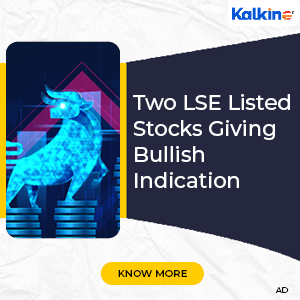The FTSE 250 index represents the list of companies listed on the London Stock Exchange which in terms of Market Capitalization are ranked from 101st to 350th, the first 100 of them being taken up for the construction of the FTSE 100 Index. The Index is the third largest of the FTSE indices maintained by the FTSE Russell Company for the London Stock Exchange after FTSE all share index and FTSE 100 index, and was established on 12th October 1992, having an index value of 831.38 at launch. Of the companies listed on the index, the largest constituents belong to the Financial sector, followed by industrial sector and with the third highest number of companies belonging to the consumer services sector. The Index which for a long time played second fiddle to the FTSE 100 index has started gaining importance lately as an indicative of the health of the British economy, on account of  the FTSE 100 index taking on a more international flavor as it has started to host more and more multinational and foreign companies in its fold. The FTSE 250 Index is calculated real time and published every minute from 8.00 am in London when trading starts on the London Stock Exchange to 4.30 pm in the afternoon when the trading on the exchange stops.
Some of the prominent companies topping the list on this Index are; 3i Infrastructure Plc, 4imprint Group Plc, Aberforth Smaller Companies Trust Plc, Aggreko Plc, Airtel Africa Plc, Alliance Trust Plc, Apax Global Alpha Limited, Ascential Plc, Ashmore Group Plc, Assura Plc, Aston Martin Lagonda Global Holdings Plc, Avast Plc, AVI Global Trust Plc, Babcock International Group Plc, Bakkavör Group Plc, Balfour Beatty Plc, Bankers Investment Trust Plc, Barr A.G. Plc.
Below are mentioned six key factors that distinguish the FTSE 250 index from its other FTSE cousins. These factors can be used to identify investing opportunities in the index especially in the transformational times that are coming in the British Capital markets in the aftermath of the current prevailing politico economic environment.
- Best growth opportunities â The FTSE 250 constituent companies are second rung companies on the London Stock Exchange. These companies are characterized by the twin aspects of having sufficient size to be sustainable yet face significant growth opportunities, providing the investors with ample potential for capital gain with reduced risks. The FTSE 100 companies on the other hand are large companies with very low risk yet with low growth potential and income being a more prominent part of their returns than capital gains; AIM listed companies are small with very high risks and offer high reward potential which may not be suitable for moderately risk averse investors.
Â
- Best Bounce back opportunities â The FTSE 250 constituent companies have been the hardest hit of the lot on the London Stock Exchange due to the adverse macroeconomic environment and the Brexit Headwinds that have gripped United Kingdom for the past several months. These companies are not as structurally strong as the FTSE 100 companies nor do they have such wide geographical market reach so that they may be able to protect themselves from the adverse economic conditions in the United Kingdom. Now that negative headwinds are showing signs of subsiding, these companies have the maximum bounce back potential and consequently of value creation per unit of potential risks.
Â
Â
- Higher yield income opportunities â The valuation of the FTSE 250 index have also suffered the most on the London Stock Exchange due to the adverse macroeconomic environment and the Brexit Headwinds affecting United Kingdom currently. As a consequence, this has pushed the dividend yields of many of the constituent companies on this index higher; some companies on this index which have discontinued paying dividends due to the bad economic environment will also return to their historic levels once the situation improves for them. Overall should an investor invest in these companies now when the prices are low, he will get a higher dividend yield when situation improves.
Â
- More diversified than FTSE 100 â The FTSE 250 index is a more diversified index than the FTSE 100 index on account of 250 companies covered by this index whereas only 100 companies are covered by the FTSE 100 index. There is more sectoral flavor in this index than the FTSE 100 index with a greater number of industries including small and sunrise industries being part of this index compared to the FTSE 100 index. This diversity not only makes the FTSE 250 index more diverse than the FTSE 100 index but also renders it an aspect of risk management that is not present with the FTSE 100 index.
Â
- Funds styled to this index to have more potential â The Mutual Funds and Exchange traded Funds (ETFâs) that are based on the FTSE 250 index have more growth and income potential than the FTSE 100 constituent companies per unit of risk. These funds, on account of investing in mid stage companies, provide mid to long term growth potential with many of the constituent companies having potential to transition to the FTSE 100 index in the future. The risk management perspective of the FTSE 250 index is slightly different than what plays for the FTSE 100 index and thus this index offers risk reward potential which is marginally higher than the FTSE 100 index.
Â
Â
- More domestic flavor than FTSE 100 â The constituent companies of the FTSE 250 index have a greater number of British Domestic companies on its fold than the FTSE 100 index. These companies have a greater proportion of their business and revenues coming from within United Kingdom than with FTSE 100 constituent companies which have an increasing proportion of their businesses and revenues generated from overseas. This aspect of this index makes it a better representative of the British economy than the FTSE 100 index.
The above six factors are the ones which stand out most about the FTSE 250 which distinguish it from other indices, but there are several other such factors also which can be pointed out about the index and can act as a guide to someone looking for ideas to create value out of this index.





